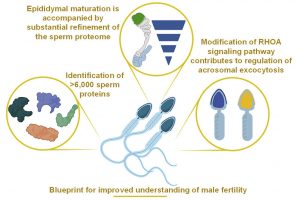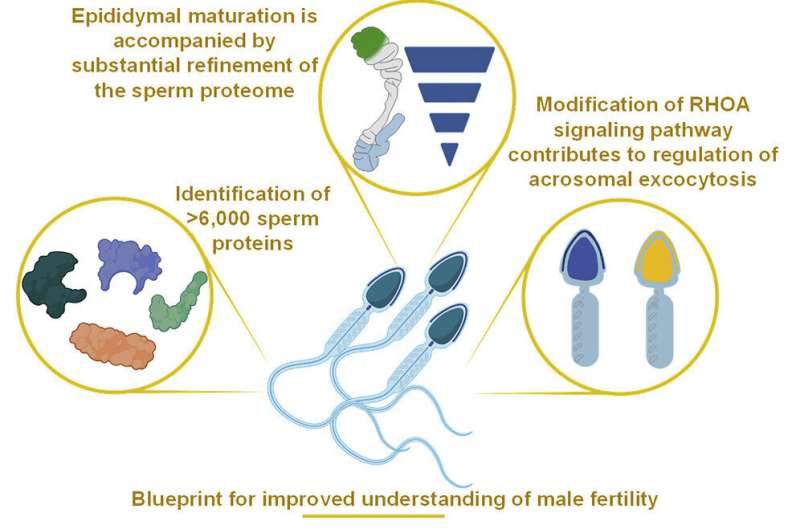Researcher identifies 6,000 sperm proteins, potentially leading to male contraceptive


A researcher has for the first time profiled 6,000 sperm proteins that could help create a non-hormonal male contraceptive—while also building on key research linking sperm health to overall men’s health.
Dr. David Skerrett-Byrne from the Hunter Medical Research Institute’s (HMRI) Infertility and Reproduction Research Program said proteins in sperm underwent a process called phosphorylation—this process either activates or deactivates the protein.
“Identifying these proteins and then taking them through a process of phosphorylation helps us understand the process that switches proteins on and off,” Dr. Skerrett-Byrne said.
“The potential for this is that we could eventually use drugs to target specific proteins, and maybe even create a non-hormonal male contraceptive.”
These findings have been published in a Cell Reports paper titled “Global profiling of the proteomic changes associated with the post-testicular maturation of mouse spermatozoa.”
Profiling these proteins also builds on the growing research from the University of Newcastle and HMRI into what is causing the global male infertility crisis.
Dr. Skerrett-Byrne said by better understanding what happens to sperm as it passes through the epididymis, (the small tube that connects the testes to the vas deferens) we could start to further understand the causes of infertility.
“Sperm is the only cell in the human body that can’t read its own DNA and create proteins,” Dr. Skerrett-Byrne said.
“As sperm travel through the epididymis, they undergo profound changes, key among these changes is a substantive remodeling of the protein composition of the sperm architecture, the scale of which has yet to be fully resolved.”
The potential applications for this work go beyond infertility. Dr. Skerrett-Byrne explained there was increasing recognition that male reproductive health was inextricably linked to overall health.
“We envision the most immediate clinical impact of this work will be on the detection of defects in sperm maturation causally associated with male infertility.”
“As an additional dividend, poor semen parameters have utility as a ‘canary in the coal mine’ foreshadowing the onset of a spectrum of co-morbidities, our protein resources provided here may find application in the prediction of the long-term health of individuals.”
More information:
David A. Skerrett-Byrne et al, Global profiling of the proteomic changes associated with the post-testicular maturation of mouse spermatozoa, Cell Reports (2022). DOI: 10.1016/j.celrep.2022.111655
Journal information:
Cell Reports
Source: Read Full Article